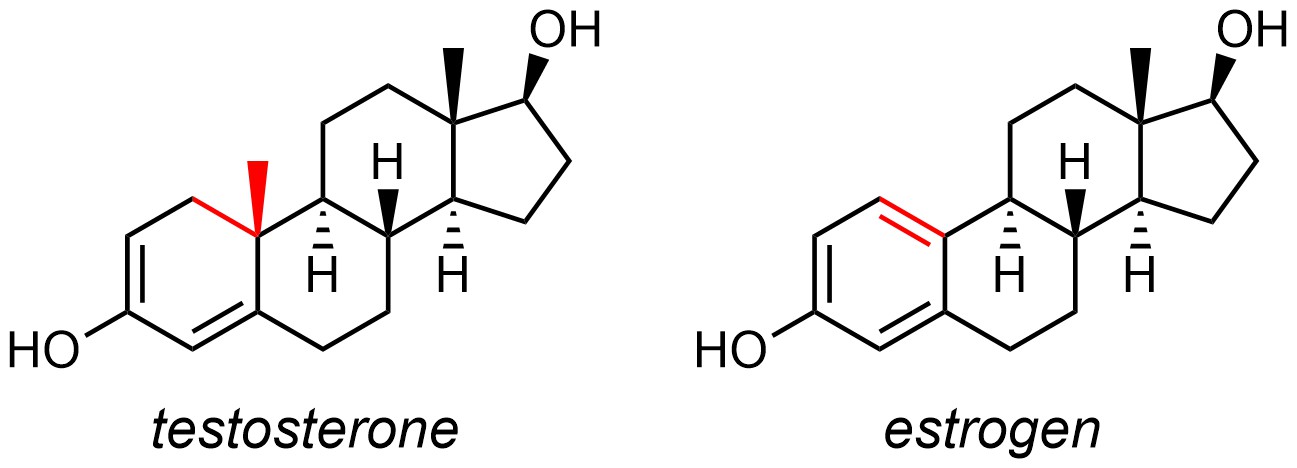2.1. Why Do We Care?
Two hormones, testosterone and estrogen, are responsible for a large number of secondary sex characteristics in humans. Despite the large difference in effects between these two hormones, they are incredibly similar to each other structurally (Figure 2.1).

Figure 2.1 – Testosterone (enol form) and Estrogen.
This leads to an important fact: a chemical’s structure directly controls its chemical reactivity. This is true in enzymes/receptors in biological systems, but it is also true in non-biological systems. A molecule’s structure will directly dictate its physical properties, such as colour, melting/boiling points, solubility, etc. More importantly it will directly dictate its chemical reactivity, such as what reactions it may undergo, how it does so, where on the molecule it will undergo a reaction, etc. This means that knowing and understanding a molecule’s structure is vital for knowing and understanding chemical reactivity.
Communication is another key aspect of understanding. For example, if you want to ask someone about a physical property of estrogen you need to be able to convey that that specific molecule is the one you are asking about. You could do this by showing a picture of the molecule, but this is unwieldy; there are infinitely many molecules you may wish to ask about, and it is not practical to carry images of them all with you at all times. Alternatively, you could say “estrogen” but this again is unwieldy; memorizing specific names for infinitely many molecules would take an infinitely long time.
To deal with this issue a systematic way of naming molecules based on their structure was developed. This allows communication by deriving the name to contain all relevant information about the structure being discussed. However, in order to be systematic it requires a series of highly specific rules.

